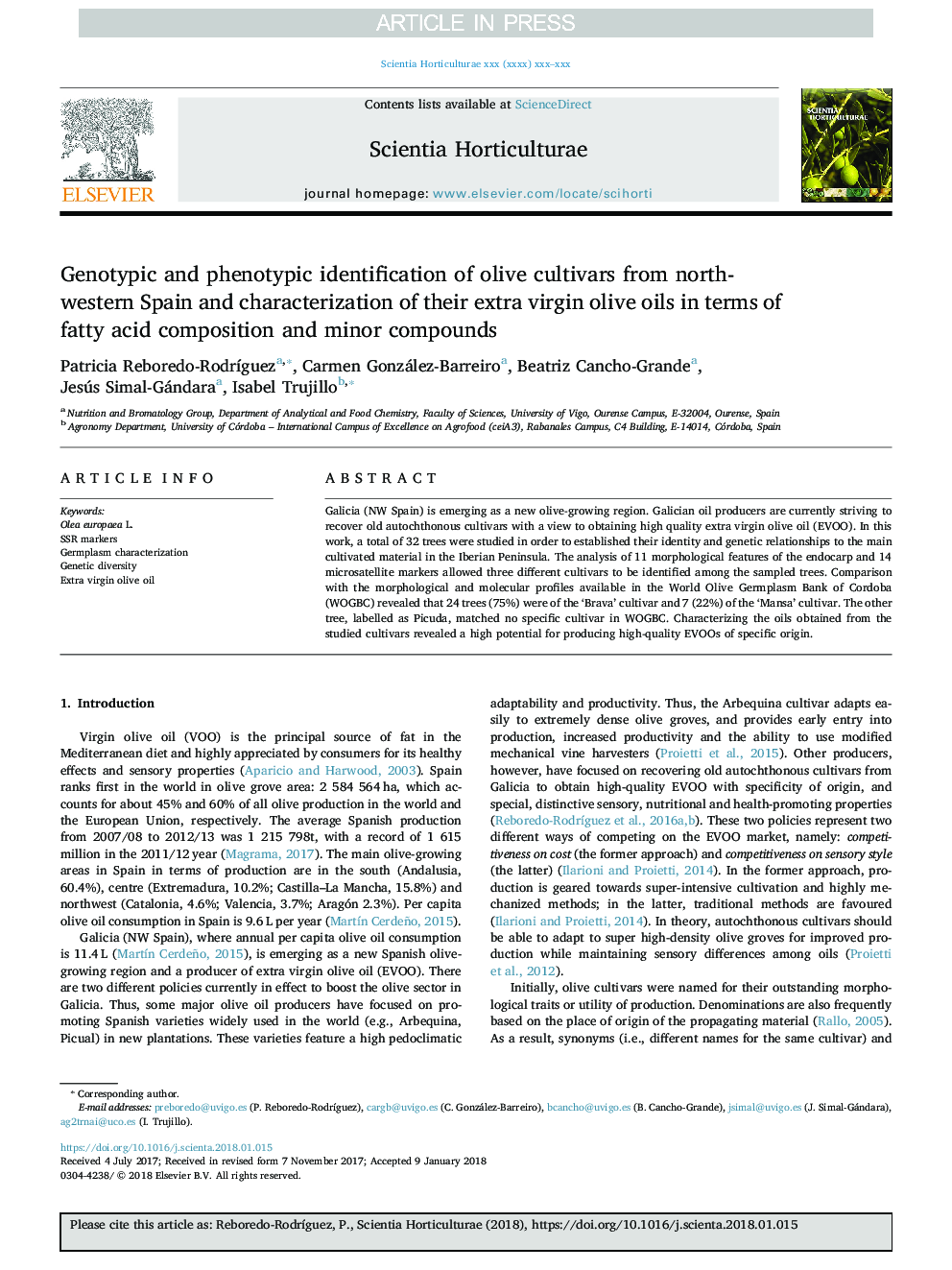| Article ID | Journal | Published Year | Pages | File Type |
|---|---|---|---|---|
| 8892953 | Scientia Horticulturae | 2018 | 11 Pages |
Abstract
Galicia (NW Spain) is emerging as a new olive-growing region. Galician oil producers are currently striving to recover old autochthonous cultivars with a view to obtaining high quality extra virgin olive oil (EVOO). In this work, a total of 32 trees were studied in order to established their identity and genetic relationships to the main cultivated material in the Iberian Peninsula. The analysis of 11 morphological features of the endocarp and 14 microsatellite markers allowed three different cultivars to be identified among the sampled trees. Comparison with the morphological and molecular profiles available in the World Olive Germplasm Bank of Cordoba (WOGBC) revealed that 24 trees (75%) were of the 'Brava' cultivar and 7 (22%) of the 'Mansa' cultivar. The other tree, labelled as Picuda, matched no specific cultivar in WOGBC. Characterizing the oils obtained from the studied cultivars revealed a high potential for producing high-quality EVOOs of specific origin.
Keywords
Related Topics
Life Sciences
Agricultural and Biological Sciences
Horticulture
Authors
Patricia Reboredo-RodrÃguez, Carmen González-Barreiro, Beatriz Cancho-Grande, Jesús Simal-Gándara, Isabel Trujillo,
